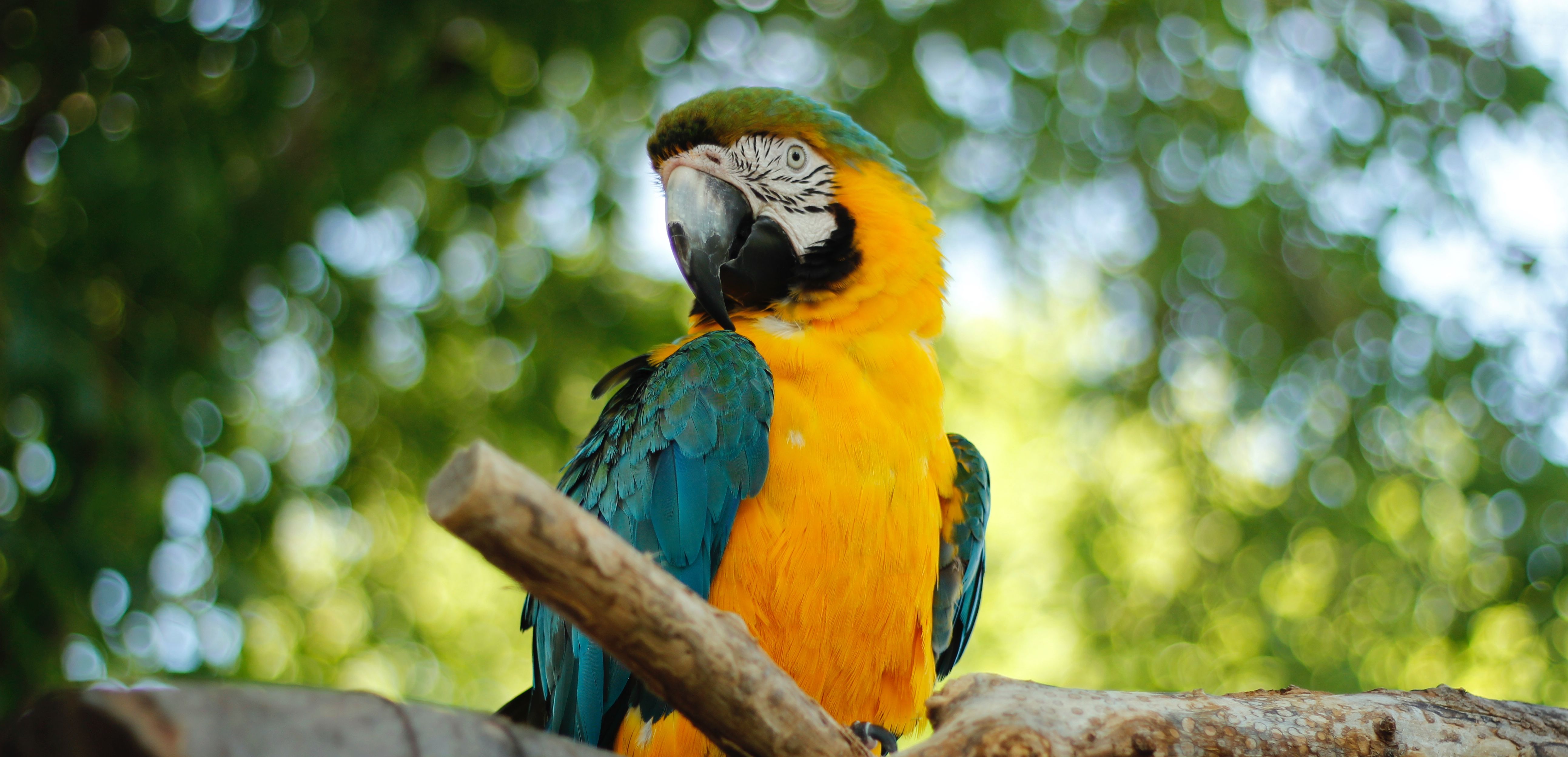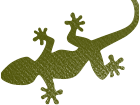Animals
Lincoln Children’s Zoo is home to over 400 animals including giraffes, cheetahs, tigers, giant anteaters, red pandas, Humboldt penguins, ring-tailed lemurs, and Galapagos tortoises. Learn more about each of the animals that live here by exploring the areas below.
*This is not an all inclusive list of the animals at Lincoln Children's Zoo
-
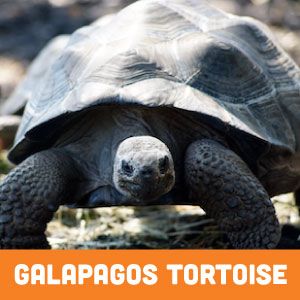
Galapagos Tortoise
Chelonoidis nigra microphyesCONSERVATION STATUS
EndangeredNATURAL HABITAT
Galapagos tortoises are found on the Galápagos Islands. They live in hot, dry areas with sparse vegetation or cool, wet areas with lush ground vegetation.DIET
IN THE WILD – Grasses, vines, cactus fruit, fallen fruit and assorted vegetation
IN THE ZOO – Assorted green grass and hayFASCINATING FACTS
• Can live to be over 100 years old
• Oldest recorded age is 171 years old
• Adults average 5 feet in length and 475 pounds
• Move at 0.16 mph compared to humans who walk at 2.8 mph -
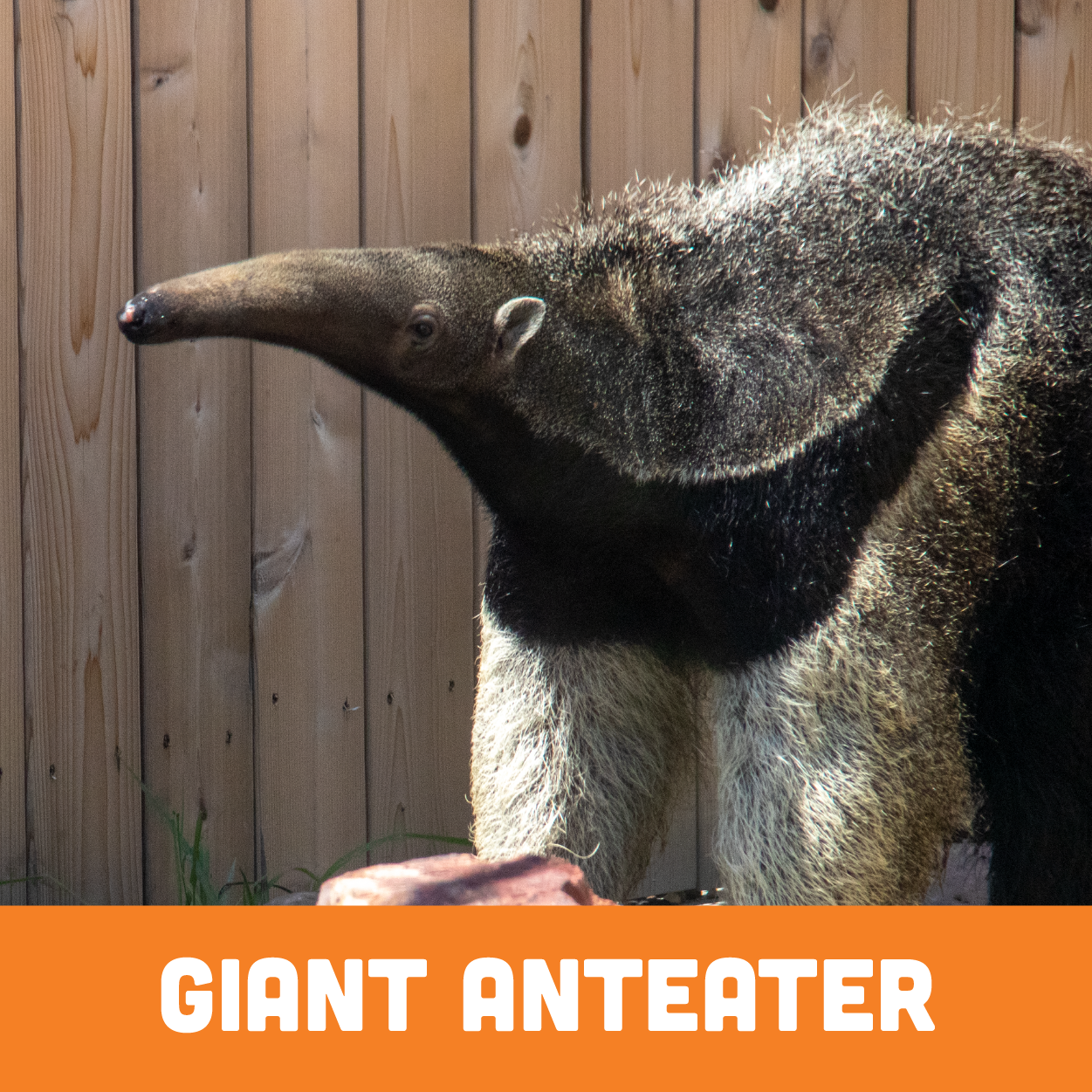
Giant Anteater
Myrmecophaga tridactylaCONSERVATION STATUS
VulnerableNATURAL HABITAT
Found in grasslands, savannas, and open areas of tropical forestsDIET
IN THE WILD – Termites, ants, insect larvae, beetles and occasionally fruit
IN THE ZOO – Specially formulated insectivore diet, insects, and fruitFASCINATING FACTS
• Giant anteaters do not have teeth; instead, they have a tongue that is 2 feet in length.
• Their tongue is coated in a sticky saliva allowing them to slurp up ants and termites.
• They can flick their tongue out up to 150 times per minute.
• If threatened, they may make a roaring sound, but typically will remain non-vocal. They will often rear up on their hind quarters and swipe with their long front claws.
• They can eat up to 30,000 insects a day.
• The giant anteater’s sense of smell is 40 times more powerful than ours.
• In order to avoid being bit by an ant during feeding, the giant anteater feeds for only a minute before moving on to the next colony.
• They have one of the lowest body temperatures of any mammal at 91 degrees Fahrenheit, which is most likely due to their insect diet that is very low in calories.
• Giant anteaters are great swimmers, using the freestyle stroke and their long nose as a snorkel. -
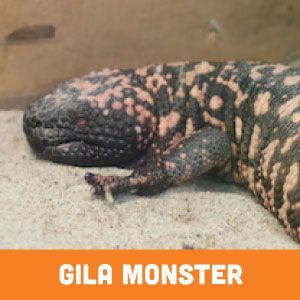
Gila Monster
Heloderma suspectumCONSERVATION STATUS
Near ThreatenedNATURAL HABITAT
The Gila monster is found in scrublands, deserts and oak woodlands.DIET
IN THE WILD – Birds, eggs, frogs, lizards and insects
IN THE ZOO – RodentsFASCINATING FACTS
• Only venomous lizard native to the United States
• Store fat in tails during the winter months
• May spend more than 95 percent of their life in underground burrows
• A protein found in their saliva has been used in FDA approved treatments for type 2 diabetes -
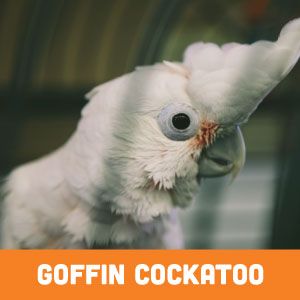
Goffin Cockatoo
Cacatua goffiniCONSERVATION STATUS
Near ThreatenedNATURAL HABITAT
Goffin cockatoos live in the Tenimber Islands of Indonesia.DIET
IN THE WILD – Seeds, nuts
IN THE ZOO – Parrot chow, fruits, seedsFASCINATING FACTS
• Are social and friendly
• Smallest cockatoo species
• Live 30+ years
• Introduced to the wild in Puerto Rico, Singapore, and Kai Islands
• Deforestation and bird trade affect its population -
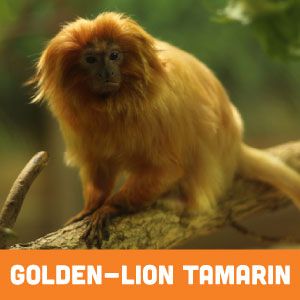
Golden Lion Tamarin
Leontopithecus rosaliaCONSERVATION STATUS
EndangeredNATURAL HABITAT
The Golden lion tamarin lives in a small area of the tropical rainforest.DIET
IN THE WILD – Fruits and insects
IN THE ZOO – Fruits, vegetables and insectsFASCINATING FACTS
• Largest member of the marmoset and tamarin group
• Have claws instead of nails enabling them to grab insects in tight spots
• Sleep in hollow tree cavities or dense vines
• Sleep in different dens each day, making it harder for predators to find them -
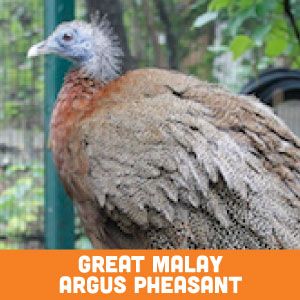
Great Malay Argus Pheasant
Argusianus argusCONSERVATION STATUS
VulnerableNATURAL HABITAT
The Great Malay Argus Pheasant lives in dry, lowland primary and logged forests.DIET
IN THE WILD – Fruits, ants, slugs, snails, meat and insects
IN THE ZOO – Fruits, vegetables, greens, seeds, insects and grainFASCINATING FACTS
• Male's call can travel up to a half a mile
• Females look different from males and are easy to tell apart
• Males have longer wing and tail feathers than females
• Males have feathers with "eyes" on them called "ocelli" -
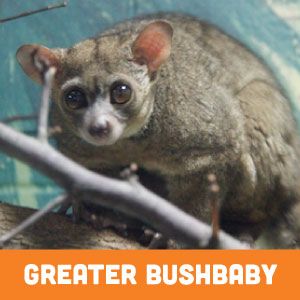
Greater Bushbaby
Otolemur crassicaudatusCONSERVATION STATUS
Least ConcernNATURAL HABITAT
The greater bushbaby lives in Eastern Africa woodlands.DIET
IN THE WILD – Insects, sap from trees and seeds
IN THE ZOO – Fruit, vegetables, insects, insectivore pellets and gels packed with nutrientsFASCINATING FACTS
• Use their big eyes for night vision
• Use big ears to find insects
• Newborns weigh less than half an ounce
• Make a loud call that sounds like a baby crying -
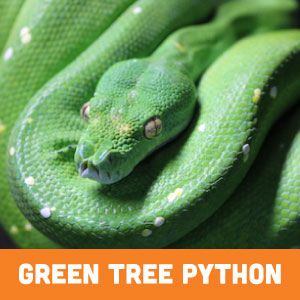
Green Tree Python
Morelia viridianCONSERVATION STATUS
Least ConcernNATURAL HABITAT
The Green tree python is found in the bushes, trees and shrubs of the rainforest.DIET
IN THE WILD – Small mammals, reptiles and birds
IN THE ZOO – Mice and ratsFASCINATING FACTS
• Capture prey by striking in an s-shaped position while hanging on branches
• Loop over branches like a saddle with head in the middle to rest
• Large teeth help to catch prey
• Females wrap around eggs to incubate them
• Juveniles are typically yellow, red or dark brown -
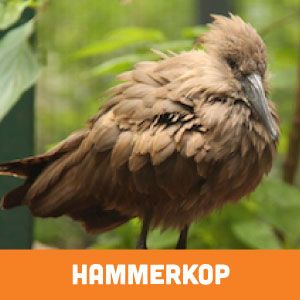
Hammerkop
Scopus umbrettaCONSERVATION STATUS
Least ConcernNATURAL HABITAT
Hammerkops live in South and Central Africa.DIET
IN THE WILD – Frogs, fish, invertebrates
IN THE ZOO – Fish, meatFASCINATING FACTS
• There are many legends surrounding hammerkops
• Make 3-tiered nests that can be strong enough to hold a human
• Stand on hippos to look for frogs to eat
• Smallest African stork
• Shape of their head gave them their name -
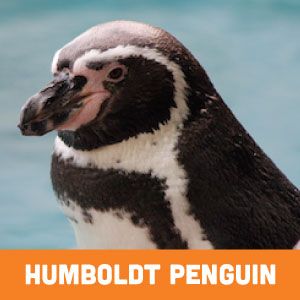
Humboldt Penguin
Spheniscus humboldtiCONSERVATION STATUS
VulnerableNATURAL HABITAT
The Humboldt Penguin lives near rocky mainland shores in the Humboldt Current of Pacific coast Chile and Peru.DIET
IN THE WILD – Fish, squid and krill
IN THE ZOO – Mackerel, smelt and capelinFASCINATING FACTS
• Adults weigh approximately 8-10 pounds and are 15-18 inches tall
• Swim up to 17 miles per hour
• Lose and replace all feathers once a year in a process called molting
• Each of the Zoo's penguins eat 2 pounds of fish per day -

Indian Blue Peafowl
Pavo cristatusCONSERVATION STATUS
Least ConcernNATURAL HABITAT
The peafowl is found in moist and dry deciduous forests and prefers sites where water is available.DIET
IN THE WILD – Seeds, insects, fruit, small mammals and reptiles
IN THE ZOO – Fruits, vegetables, seeds and meatFASCINATING FACTS
• Males are referred to as peacocks, females are peahens and offspring are peachicks
• Have 11 different calls
• Males have an extravagant train of feathers
• Males don’t develop the long train of feathers until age two -
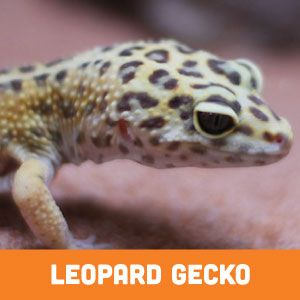
Leopard Gecko
Eublepharis maculariusCONSERVATION STATUS
Least ConcernNATURAL HABITAT
Leopard geckos live in Northern India, Pakistan, Afghanistan, Iran and Iraq.DIET
IN THE WILD – Insects
IN THE ZOO – InsectsFASCINATING FACTS
• Stores fat in tail
• Unlike most geckos, they have movable eyelids
• Replace their 100 teeth every 3-4 months -
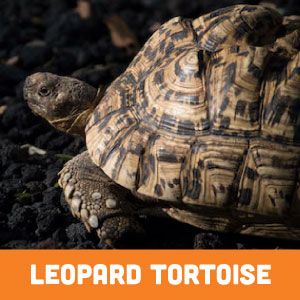
Leopard Tortoise
Stigmochelys pardalisCONSERVATION STATUS
Least ConcernNATURAL HABITAT
The leopard tortoise lives in savannah regions.DIET
IN THE WILD – Fallen fruit, vines, grasses, wild mushrooms and leaves
IN THE ZOO – Various greens, hay and specially formulated tortoise chowFASCINATING FACTS
• Females lay up to 30 eggs in a nest 10 inches deep
• Can live 80 to 90 years
• Depend on other senses to find food and avoid predators
• Have a row of small toenails enabling them to dig
• Can go underwater for up to 10 minutes -
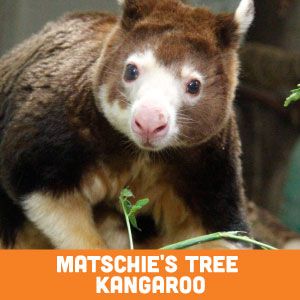
Matschie's Tree Kangaroo
Dendrolagus matschieiCONSERVATION STATUS
EndangeredNATURAL HABITAT
The Matschie's tree-kangaroo can be found in mountainous areas of the rainforest.DIET
IN THE WILD – Leaves, nuts and mosses
IN THE ZOO – Lettuce, fruits, vegetables and specially formulated biscuitsFASCINATING FACTS
• Spend most of their time in trees, coming down occasionally to feed
• Licks forearms, letting the evaporation cool its body instead of sweating
• Fetus-like young crawl into mother's pouch after birth
• Babies are called joeys and stay in the mother's pouch for ten months -
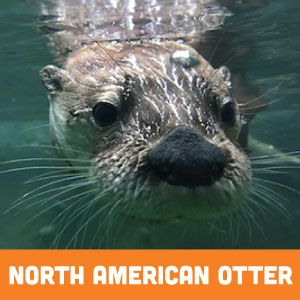
North American River Otter
Lontra canadensisCONSERVATION STATUS
Least ConcernNATURAL HABITAT
The North American river otter lives in lakes, rivers, wetlands, coastal shorelines, marshes and estuaries.DIET
IN THE WILD – Fish, frogs, insects, crustaceans and small mammals
IN THE ZOO – Fish, meat and carrotsFASCINATING FACTS
• Members of the weasel family
• Have waterproof fur that protects their skin and keeps it warm and dry
• Can dive to a depth of 60 feet
• Enjoy sliding down muddy hills, bouncing objects in their paws, playing tag and wrestling
Conservation
Lincoln Children’s Zoo is committed to animal conservation efforts and saving animals from extinction. Home to over 30 endangered animals, the Zoo strives to provide the highest-quality care to these near extinct species. Lincoln Children’s Zoo partners with organizations throughout the world that manage captive animals and wild animals with a goal to create a plan to ensure endangered animals are saved and protected for future generations.
The Zoo is part of the Association of Zoos & Aquarium’s Species Survival Plan, which oversees the management of select species with the goal of enhancing conservation in the wild. Species Survival Plan is led by expert advisors who work together to manage the demographic distribution and long-term sustainability of nearly 500 species.
Photo Ark Collaboration
Lincoln Children’s Zoo collaborates with National Geographic photographer Joel Sartore and his Photo Ark project. The Photo Ark is a groundbreaking effort to document species before they disappear and to get people to care while there’s still time. The Photo Ark started at Lincoln Children’s Zoo with the first photograph taken of a naked mole rat. To date the Photo Ark has documented 10,531 species. Find out more about Joel Sartore’s Photo Ark here.

